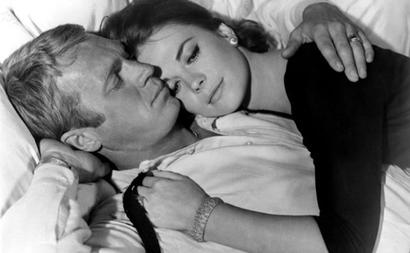

Why you should be wearing a Junghans watch on your wrist
Originally established in 1861 as a clock component factory, the company was the brainchild of Erhard Junghans
- Words: Alistair MacQueen
Few items in life offer a more steadfast pleasure in life than a well-produced timepiece. Enveloping your wrist with a blend of craftsmanship, finesse and style, it telegraphs several things about the wearer to a wider audience. In the case of Junghans, this understated brand have produced enduring and classic designs for a discerning clientele.
Originally established in 1861 as a clock component factory, the company was the brainchild of Erhard Junghans, who founded the business in Schramberg, in the south of Germany. From these entrepreneurial Black Forest beginnings, the watch brand has been emboldened in its pursuit of precision and style by art movements, manufacturing innovations and a commitment to adhere to craftsmanship. Monica Porracin, Managing Director of The Blue Company and UK distributor for Junghans, says the brand is “appreciated by young professionals as well as mature watch connoisseurs”.
She also describes how its watches “combines a classic style with a trend-driven look which you can’t find in any other competitor. I have seen elegant gentleman wearing a Rolex or Tudor watch, and they purchase a Junghans as a second watch. You have young professional buying it as first nice watch and you may have more refined people buying it as a second or third watch.”
Here’s why we believe it should be the first watch on your wrist.
Evoking the period when racing was the pursuit of the pioneering gentleman, the Meister Driver was borne out of the friendships between Erhard’s son, Arthur Junghans, Wilhelm Maybach and Gottlieb Daimler. The new Meister Driver Automatic encapsulates the brand’s passion for automotive affairs.
With its traditional racing green or brown calfskin leather strap and perforated underlayer (echoing the car seats of the early 20th century), it is an elegant invocation of the halcyon days of motor racing. Inside the convex hard plexiglass lies the Côtes de Genève finishing, which assists with its automation and aesthetics of the self-winding movement and comes with a 38-hour power reserve.
Meanwhile, the black Dauphin hands, luminous two-tone dial and legible minute markers all serve as elegant and practical details for your next excursion in the Bentley.
In 1961, Junghans turned to architect and product designer Max Bill to create a watch for the company. As a student of the Bauhaus school under Walter Gropius, Bill’s design were imbued with a minimalist clarity and precise proportions, which echoed the brand’s own meticulous approach to watchmaking.
The Bauhaus approach to form follows function was to manifest itself in many iterations of the timepieces and culminates this year in the new Max Bill Edition 2017. On the back of the timepiece, each with precision quartz movements, can be seen the “variation 1” print from the range of his grafische reihen (graphic series). Available in two variants, one comes with a simple, lined index dial, the other features the Max Bill typography with numbers for the hour markers. Both versions are equipped with a special strap featuring the colours used in “variation 1” on the lining leather for further synchronicity.
In another watchmaking confluence of man and machine, the Meister Pilot chronographs of 1995 were initially issued to pilots in the newly formed Bundeswehr, before being rolled out onto civvy street.
The coating in question stands for diamond-like carbon, and resembles an alluring dark anthracite colour to suggest that this is one heavy duty timepiece. In common with many Pilot watches, the face remains typically instrument-dial-esque, but the 12 concave notches on the bezel and compass rose decor indicate top-notch attention to detail.


